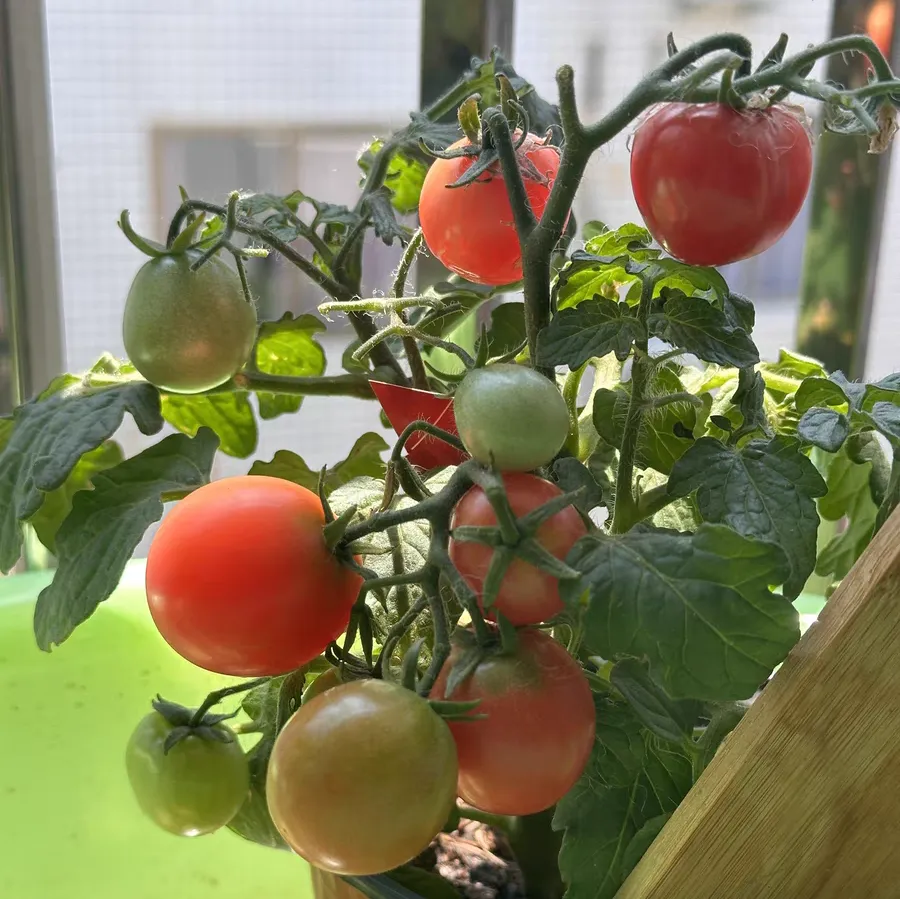Recently, many vegetable growers have asked: Why do tomato leaves suddenly curl up? Don't worry! Today, let's talk about the causes and solutions, which even beginners can easily master!
### **I. Environmental Factors**
#### 1. Temperature
When the temperature soars above 35°C and air humidity drops below 50%, tomato plants automatically curl their leaves to reduce water evaporation. This can also cause leaf yellowing and edge drying.
**First aid:** Use a sunshade net at noon to cool down, and water with a drip irrigation system in the morning and evening. Avoid watering at noon to prevent root scalding!
#### 2. Watering
- **Water shortage:** Prolonged soil drought causes leaves to curl from the edges, and severe cases may lead to entire leaves rolling up like paper tubes.
- **Waterlogging:** Frequent overwatering suffocates roots, making leaves first sag and then curl upward, with the plant wilting.
**Detection method:** Insert your finger 5 cm into the soil. Water if it’s dry; if sticky, stop watering and loosen the soil for ventilation!
### **II. Fertilization**
#### 1. Excessive nitrogen fertilizer
Overuse of nitrogen fertilizers (e.g., urea) causes plant elongation, sparse and fragile leaves, intensified transpiration, and eventually upward leaf curling.
**Judgment:** Thin, tender leaves, slender stems, and poor flowering/fruiting indicate nitrogen overdose.
#### 2. Key nutrient deficiencies
- **Potassium deficiency:** Old leaves show scorched edges and upward curling, with severe cases leading to leaf necrosis and shedding.
- **Calcium deficiency:** New top leaves shrink and curl, accompanied by blossom end rot (black, rotten fruit bottoms).
**First aid:** Apply wood ash or potassium sulfate for potassium; spray chelated calcium on leaves weekly for calcium.
### **III. Human Operations**
Excessive topping or leaf picking reduces leaf count, disrupting photosynthesis and respiration. Heavy pruning during high temperatures doubles the risk of leaf curling!
**Golden rule:** Keep 3–4 healthy functional leaves per branch, and spray carbendazim on wounds after pruning for disinfection.
### **IV. Pests and Diseases**
#### 1. Spider mites
White spots are visible on the leaf backs, with curling and yellowing. Severe cases show cobweb-like webbing.
**Solution:** Alternate spraying abamectin and spirodiclofen, 3 times weekly.
#### 2. Aphids
Tender leaves curl and deform, with yellow-green insects densely covering the backs, inducing sooty mold (black mildew on leaves).
**Solution:** Hang yellow sticky traps for adults, and spray imidacloprid + acetamiprid every 7 days.
#### 3. Viral diseases
Leaves show yellow-green mottling, shrinkage, and curling, with plant dwarfing. Infected plants cannot be cured—remove and destroy immediately!
### **V. Prevention**
1. Regularly supplement medium and trace element fertilizers (calcium, magnesium, boron).
2. Install insect-proof nets to block pests.
3. Avoid continuous cropping; rotate tomatoes with corn or beans for healthier growth.
In short, don’t give up when leaves curl. Identify the cause and treat it scientifically, and your tomatoes will recover quickly! 🍅
#TomatoCare #GardeningTips #PlantDiseases
What's wrong with the curly leaves of tomatoes?

Share with
Tagged in :




Leave a Reply